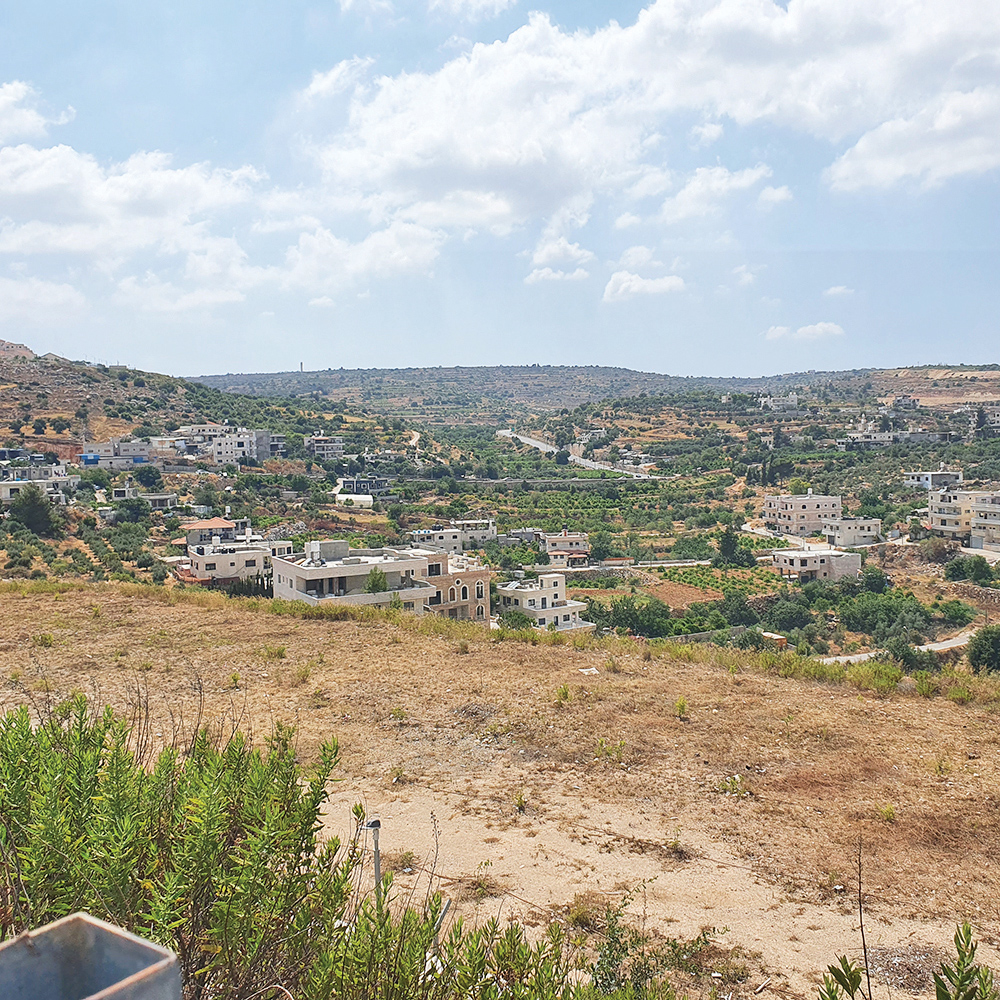
The curvy windy road leading to the northern entrance of Efrat passes by an adjacent Arab town. The town extends from a nearby hill downward and then ascends upward, almost reaching the Dagan and Tamar neighborhoods of Efrat. The town has no name, but it has schools and nearby homes. Some of the buildings have not been completed as many of its window frames are empty revealing no residency within its walls. They are unoccupied structures. Piles of garbage line the sides of a nearby road. It must be cleaned, so Efrat taxpayers have it removed at their expense.
Given that these buildings are constructed illegally, it is safe to say there are no building codes observed. As the road approaches the security gate at the entrance of Efrat, lanes narrow due to the excessive building only allowing one lane with traffic squeezing the city’s entrance adding to rush hour traffic.
The building surge on Efrat’s northern entrance is not an aberration, but part of a plan. It is a microcosm of the illegal construction which threatens Israel’s sovereignty over the region. Efrat is not alone in this predicament. It is the entire region which is in danger of illegal Arab construction which is pervasive in Judea and Samaria.
These homes have been constructed in violation of the Oslo Accords of 1993 between Israel and the Palestinian Authority. The Oslo Accords is an international agreement designating this area of the territory of Judea as part of area “C,” where the Israeli government has jurisdiction.
Gazing over the landscape and the buildings, some schools are clearly visible. According to Naomi Kahn, director of the international division of Regavim, a movement dedicated to protecting Israel’s lands and preventing illegal seizure of state land, the construction of schools are part of the process of illegal Arab building. “First you build a school. Then you build a town.” This is the process around Efrat as in so many other areas.

Schools are built in Area C as a means of establishing permanence, drawing new residents to the area who in turn build additional illegal (residential) structures in the vicinity. Schools are built to create facts on the ground. After schools are constructed, roads and homes are then built to allow easier access under the false pretext of humanitarian considerations. This is all in accordance with the Fayyad plan.
The Fayyad Plan of 2009, declared by then Palestinian Authority Prime Minister Salam Fayyad, was to create a de facto Palestinian state unilaterally. It was enthusiastically supported by the European Union, Western nations and President Obama. Fayyad published a pamphlet explaining his goals and his plans to work toward an independent Arab state with full sovereignty over all of the territory of the West Bank and Gaza strip in the 1967 borders with Jerusalem as its capital.
In a 2009 New York Times interview, Fayyad espoused a plan to “create facts on the ground that are consistent with the idea that the establishment of a state … This is our agenda, and we intend to implement it with determination.” The purpose of the plan was to circumvent negotiations and build a PLO state from the ground with huge illegal land grabs and with the financial support of international bodies. The European Union and member states are well aware this construction is illegal and yet actively demands that Israel not demolish the structures they have financed.
The Oslo Accords of 1993 were supposed to be the basis of negotiations. It was approved by a one vote majority in the Knesset. After land offers made by Israel during negotiations were rejected, a devastating intifada broke out vindicating the views of the opponents of the Oslo Accords that the objective of the Palestinian leadership had been and remained committed to armed conflict and the rejection of the very existence of Israel.
According to the Oslo Accords, the Israeli government has the authority to approve all construction in area C, which comprises 62% of the landmass of Judea and Samaria, containing the entire Jewish population of Judea and Samaria, and approximately 11% of the Arab population. Area C also includes nature reserves, archeological sites and firing zones.
According to a study published on Oct. 11, 2022 by Regavim, there are 81,317 illegal structures in area C. The abundant land masses of A and B are under the full control of the Palestinian Authority and are largely undeveloped.
The city of Efrat stands bold and proud but faces challenges to its future posed by the Palestinian Authority and members of the international community.
Larry Domnitch is the author of “The Impact of World War One on the Jewish People” by Urim Publications. He lives in Efrat.









